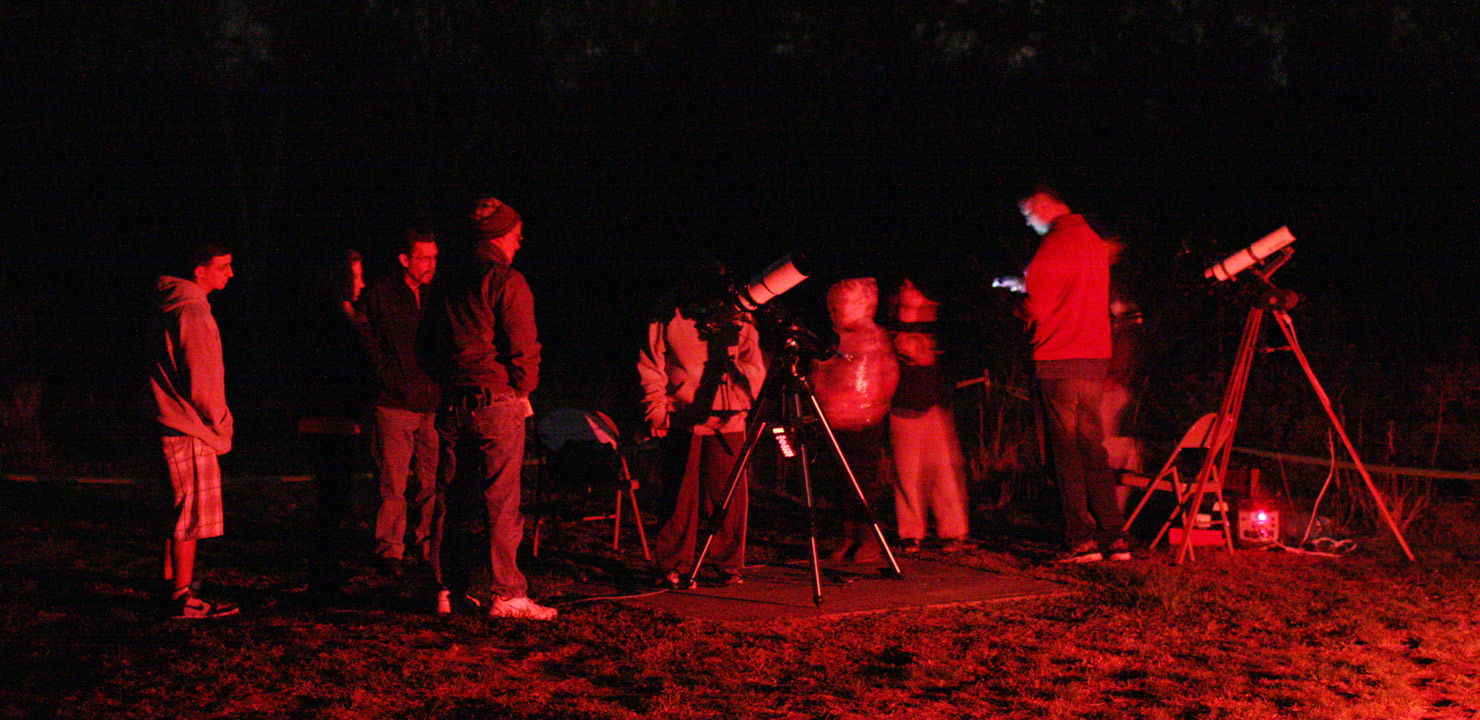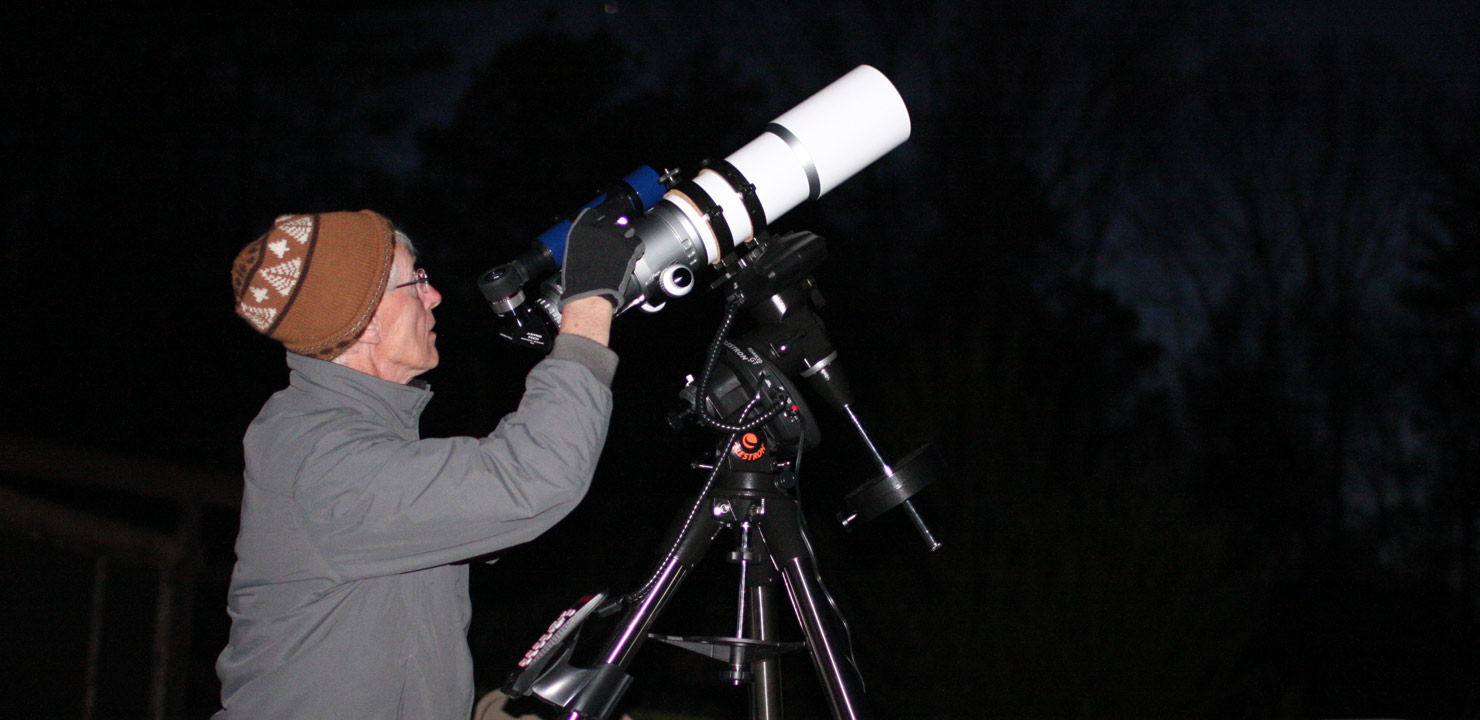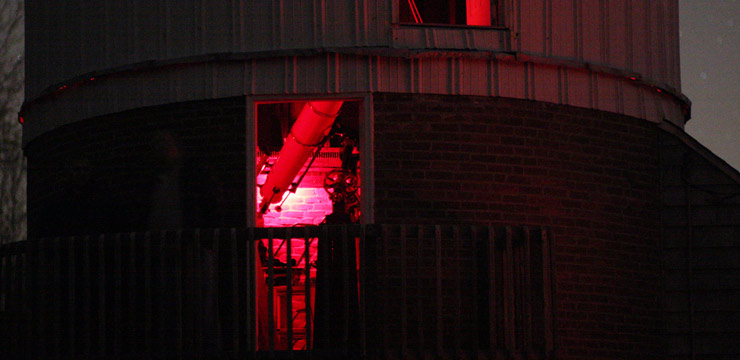
May 4
by Matt White
I could hardly believe my eyes when I glanced at the weather report for this weekend, clear skies for both Friday night’s meeting, and the public viewing session on Saturday night.
Saturday evening, I arrived at Seagrave around 15 minutes past eight. Conrad Cardano already had the 16” Meade open and was doing some imaging work. Procyon was barely visible to the naked eye as the sky was still fairly bright; however, it was easily seen in the viewfinder and on the computer screen.
Dave Huestis arrived around eight thirty, and we proceeded to open the Clark. Over the past few weeks, I have become somewhat familiar with the setup and operation of the Society’s showpiece instrument and Friday evening Dave covered some of the finer details of the proper operation of the scope. There is quite a bit to learn, and it helped to have digested the procedure in small pieces.
We tried to see if we could get a quick glimpse of Jupiter, but it was already in the trees and I couldn’t get a clear image so we slewed over to Saturn. The seeing was still a bit soft so we stayed with the 25mm eyepiece. By now we had several visitors in the dome with us and the light but steady stream of people filtered by the eyepiece. The void of the dome was quickly filled with the ooh’s and aah’s as some of them had their very first look at the ringed wonder. After the first round of guests had taken a turn viewing, I checked the image for focus and centering. The seeing had improved considerably and I suggested to Dave that we increase the power. We decided on a 12.5 mm eyepiece which yielded a magnification factor of 213x. The view was remarkable, with the Cassini division clearly visible most of the time. Atmospheric banding was also apparent and I was able to discern five of Saturn’s moons. Jim Hendrickson had his 2.5mm eyepiece with him, and we duplicated the experiment we had tried last week; Saturn at 1066X. While the image was not as clear as it was the first time, it still exceeded my expectations.
While we kept the Clark trained on Saturn, I broke out my Nikon 10x50 binoculars to show the Beehive Cluster to a few guest who had congregated on the balcony.
Towards the end of the evening we trained the scope up to Algieba or Gamma Leonis, a double star approximately 170 light years away. This golden pair of stars, has a separation of 5 arc seconds and magnitudes of 2.4 and 3.6 respectively. Since Glen Chaple’s presentation on double stars, the interest in the subject has been revived within the group. At 213x, the pair was quite easily split.
Our last target of the evening was M104, the Sombrero Galaxy. For this acquisition, I handed the helm over to Jim, as we wanted to finish before sunrise. (A bit of good natured teasing from my mentor.)
The Sombrero Galaxy is an unbarred spiral, located in the constellation of Virgo. The object has an apparent magnitude of 9.0 and is located approximately 29.3 million light years distant. Using averted vision, the center dust lane was clearly visible.
Dave and I estimated that we had a group of about twenty people come through by the time we closed down at about 11:30. Many of our guests were very enthusiastic about what they saw through the scope and that aspect alone makes it all worthwhile.





